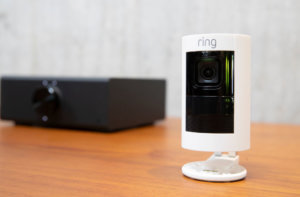Q: What should I know before deciding between Ring and Nest as my video doorbell?
Installing a video doorbell is very easy and has many benefits, which often leads to the purchase of other “smart devices,” so doing a little homework on the options as well as the platforms they use is important.
Both Nest and Ring were acquired by tech giants, Google and Amazon, so you should review what else is available for their respective platforms for future add-ons and integration options with things such as Google Home or Alexa.
Installation considerations
Before buying either, be sure to properly evaluate the location where it will be installed.
All of these devices require a solid Wi-Fi signal in order to properly function, and if you don’t currently have a hard-wired doorbell, you’ll need to buy one with a built-in battery.
Test the signal strength at the location using the Android Wi-Fi Analyzer app. Apple restricts access to its Wi-Fi chip, so the iPhone apps available aren’t as helpful, so borrow a friend’s Android smartphone if you don’t have one.
You’ll want to start by testing the 2.4 GHz signal, which is slower but offers greater distance than the 5 GHz, and is adequate for most video resolutions.
Open the “List” menu — tap the three vertical dots in the upper left corner of the app — and it will show you all of the Wi-Fi signals in range, by quality of signal.
You’ll also get a dBm number (the closer to 0, the better) with a partial circle in either green or yellow to indicate the quality of the signal and any detected interference. In my tests, if you can get it to -75 or lower, you’ll get reliable video streams from your doorbell.
If you do want to use a device that offers higher resolution (1080p), you’ll want to make sure you have a very good signal (in the green) so the video stream stays smooth.
Also, try to avoid installing the doorbell if it’s facing directly east; the afternoon sun can cause video quality issues along with false motion alerts because they use infrared heat detection.

Ring options
Ring, founded in 2012, was originally called Doorbot and was actually featured on a 2013 episode of Shark Tank, so they’ve been around for a while.
There are currently three consumer options from Ring: Video Doorbell ($99.99), Video Doorbell 2 ($199) and Video Doorbell Pro ($249).
If you don’t have power to the location, stick to the Doorbell or Doorbell 2, which have batteries and only connect via 2.4 GHz. The primary differences are in the video resolution (720p vs. 1080p) and the Doorbell 2 has a detachable battery.
Nest Hello and more
The only offering from Nest called Hello ($229) must be hard-wired, so if your location isn’t pre-wired, you’ll either have to use one of the Ring devices or have wires run to your location.
Hello works on both 2.4 and 5 GHz, the video quality is excellent and it offers optional features such as facial recognition, but it is more heat sensitive than Ring (104 degree max vs. 120 for Ring).
There are also devices you might want to consider from August ($199) and SkyBell ($199), especially if you want free options for storing your videos.
Ken Colburn is founder and CEO of Data Doctors Computer Services. Ask any tech question on Facebook or Twitter.







